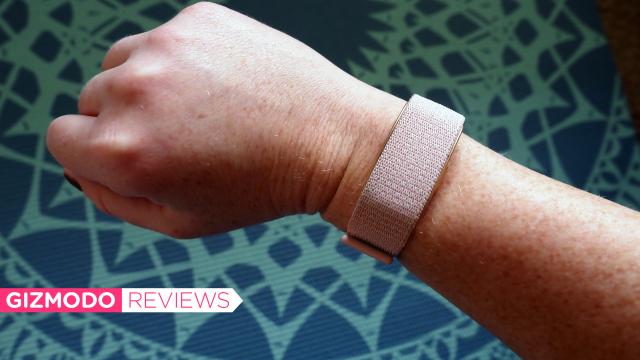I can’t figure out who, exactly, Amazon’s Halo Band is designed for. The screen-free band works in the background to track your activity and sleep, and it also has microphones to listen in on your conversations and analyse your tone. There is some appeal to a screen-free wearable that can cut down the distractions in your life while also giving you useful health data. Whoop does this well. But Halo Band is not a very good fitness tracker, and its two other flagship features require you to use your phone, rendering the screen-free thing pretty moot. And making you feel pretty awful in the process.
After a few weeks of wearing the Halo Band to track my sleep and activity, eavesdrop on my conversations, and measure my body fat, I have come to the conclusion that this is a fitness band for no one.
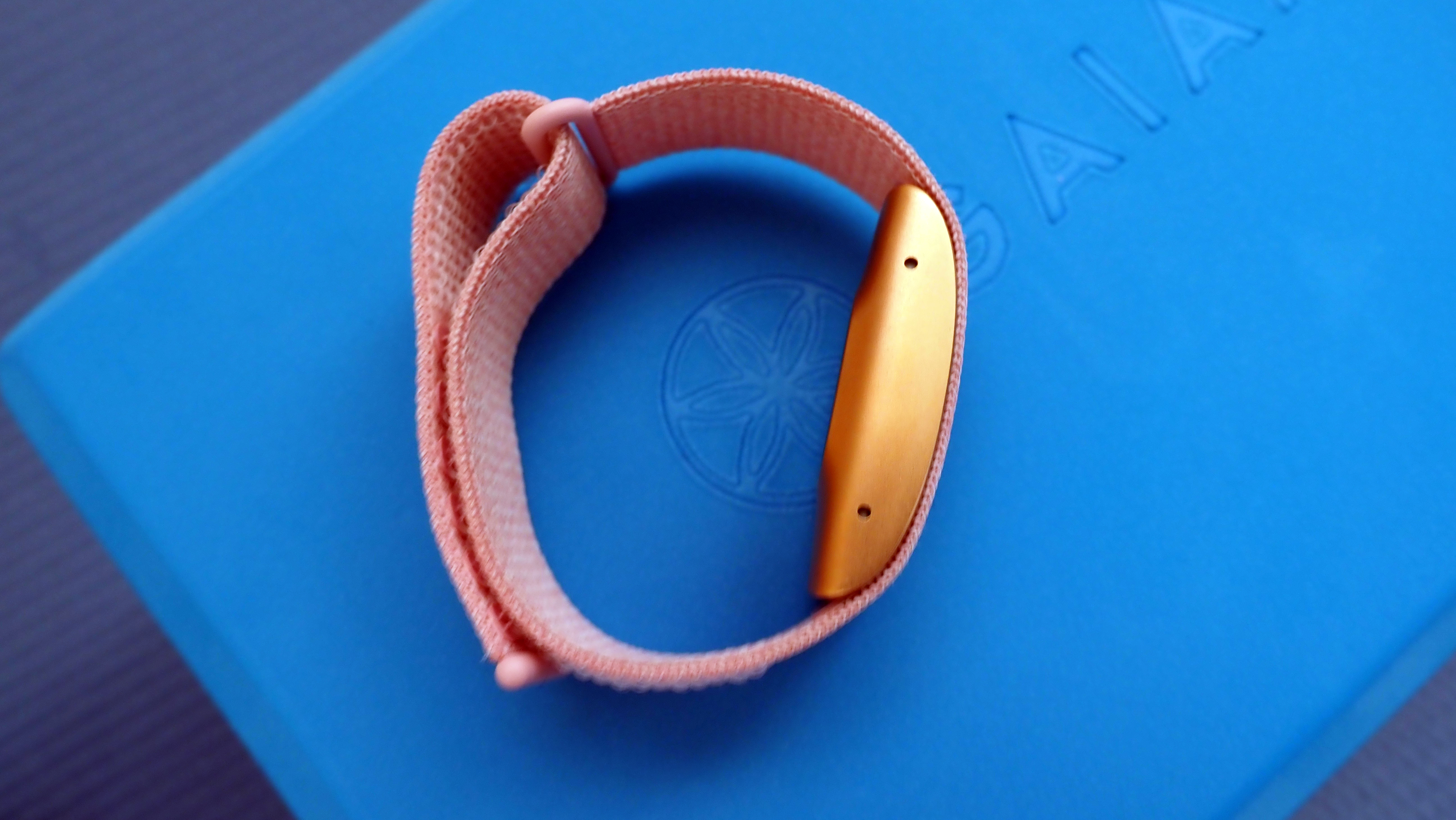
Amazon Halo Band
What is it?
Amazon's first wearable device
Price
$US100 ($130), plus $US4 ($5)/month subscription after the first 6 months
Like
Comfortable for all-day wear, a good selection of workout videos if you don't want to pay for a separate on-demand fitness subscription, tone analysis is accurate
Don't like
Body fat estimator seems inaccurate and also not helpful or motivating; activity point system is opaque; if you're gonna put microphones in a wearable device at least make them useful
The $US100 ($130) Halo Band has three flagship features: activity-tracking, tone analysis, and body fat measurements. I’ll dive into the latter two, which are bizarre at best and problematic at worst, in a minute, but first I wanted to figure out if Amazon’s first wearable was capable at its first job: monitoring movement and sleep.
The Halo Band reminds me of old Fitbits in that it’s designed to be totally unobtrusive. But where early generations of Fitbit bands excelled at tracking your heart rate and your activity without much intervention, Amazon’s wearable is so basic as to be almost useless. The band’s built-in optical heart rate sensor and accelerometer chug along in the background to log your exercise, so you don’t have to manually start a workout. But where Fitbit’s auto-tracking feature can differentiate between different types of workouts, Amazon’s band can only pinpoint whether you’re walking, running, or doing some generic activity that gets your heart rate pumping. It then scores that activity with points that are based on recommendations from the American Heart Association. Amazon says users should aim for 150 points per week. You’re supposed to experiment with activities, both on your own and using “labs” from third-party partners like Orangetheory Fitness or Aaptiv, to see which types of workouts score the most points.
The labs are essentially workout videos, which are fine to good depending on which partner is offering them. (I personally find Aaptiv’s audio-guided workouts pointless because I need to see poses demonstrated, but some people like them.) To boost your activity points, you can enroll in a program — say, a four-week yoga course — and receive reminders that you schedule ahead of time to actually take the classes. You can also choose workout classes a la carte, and filter by exercise types — cardio, outdoor, strength, and yoga — class length, or which service they’re offered on.
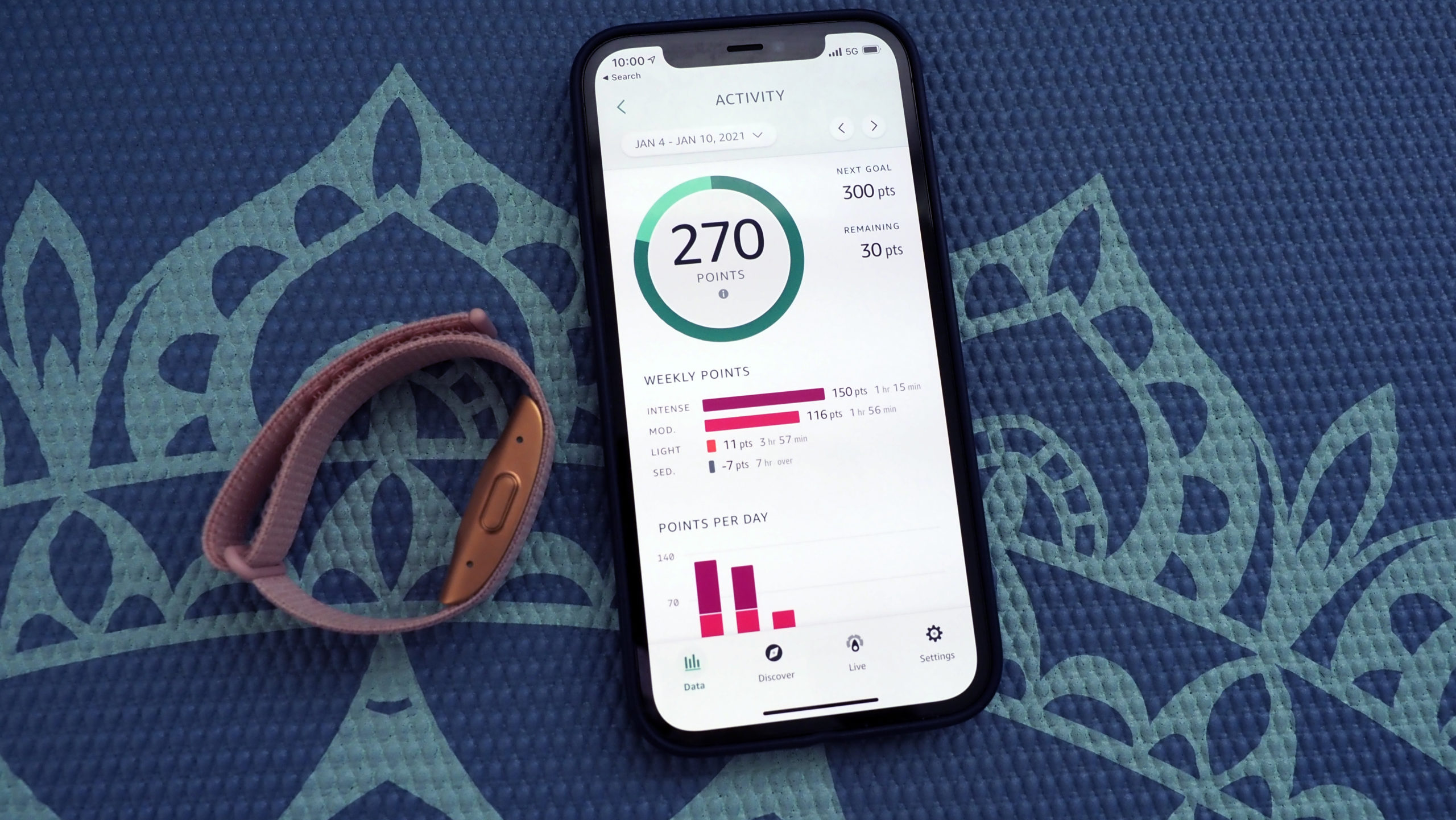
Gamifying exercise can be effective, and being able to access a variety of workouts through the app is useful if you don’t want to shell out for a separate on-demand workout streaming service. But the weekly point system is silly. I’m an active person who easily cleared the recommended 150 points per week while wearing the band, but that didn’t tell me anything about my heart health or fitness level. And racking up points isn’t as mentally satisfying as, say, beating your Fitbit friends in a daily step challenge or closing the Apple Watch’s activity, move, and stand rings every day.
Aside from awarding you points, the Halo Band logs your heart rate, step count, calorie burn during a workout. I logged a 5 km run on both the Apple Watch Series 6 and the Halo Band, and my average heart was in line for both (181 bpm for the Apple Watch and 177 bpm on the Halo Band) but the calorie burn was wildly off — 495 calories for Halo Band and 298 active calories burned on the Apple Watch. You also won’t see mileage, pace, or anything deeper than time spent doing light, moderate, and intense activity in the Halo Band app after working out. And forget logging other types of exercise — a 45-minute Peloton ride netted me 88 points in the Halo Band app, but looking back through my weekly logs, I only know what type of exercise I was doing that day because I tracked the class on the Apple Watch, too.
Amazon says the Halo Band is designed to help you understand and improve your health and fitness, but the point system is just too obtuse to be useful.
I also found the Halo Band’s ability to listen to your conversations and analyse the tone of your voice to be basically useless. Letting a device listen to you, randomly sampling minutes of your conversations, is just plain creepy. We make that tradeoff with voice-activated assistants like Alexa because we get something useful in return — we might not love an always-on microphone, but if an assistant can immediately answer our every question or execute a command on demand, we’ve collectively decided as a society that the weirdness is tolerable. The Halo Band’s tone analysis is not as useful as Alexa. Despite what Amazon may think, most people know exactly how they sound when they speak.
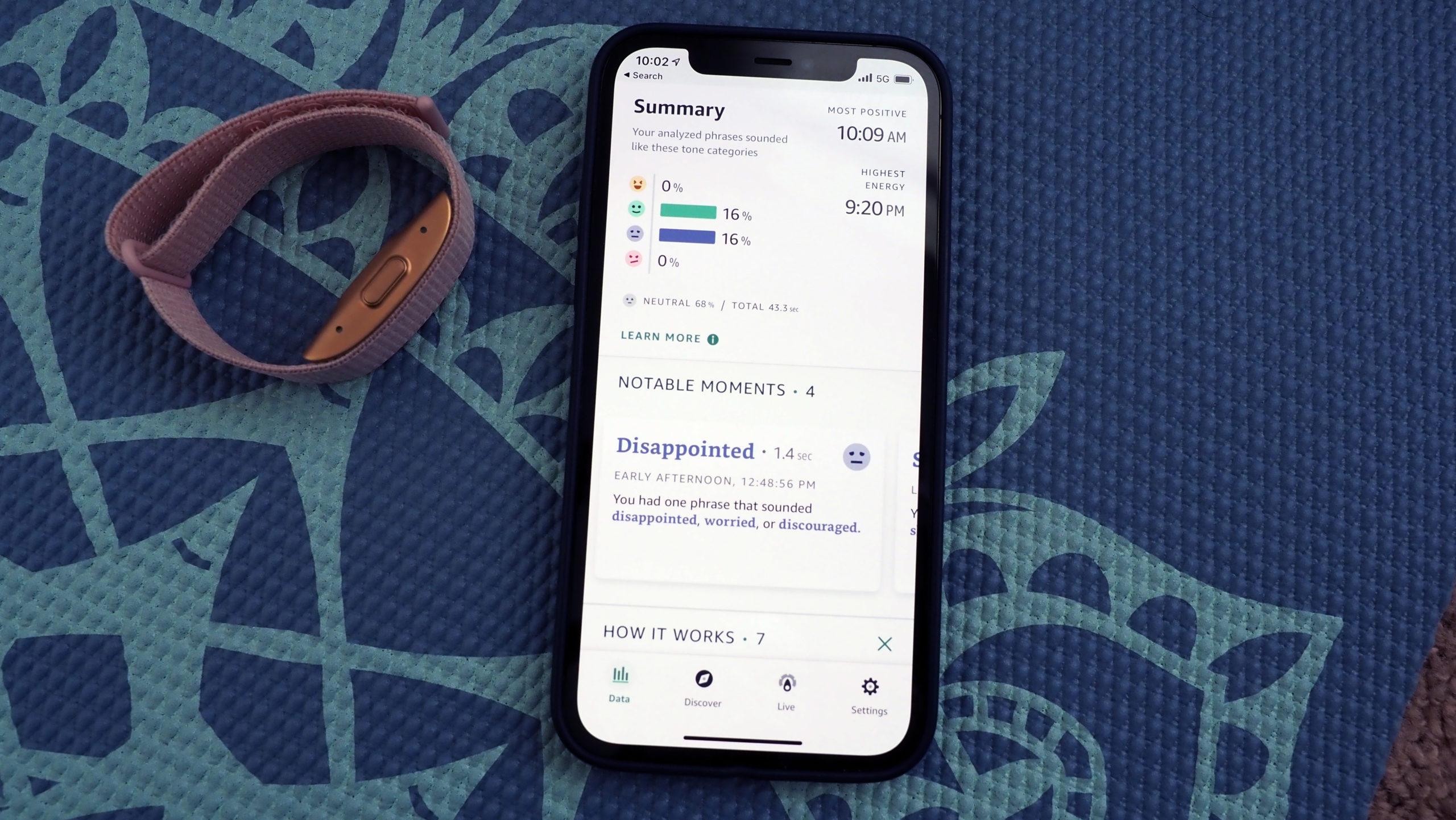
To set up tone analysis, you train the Halo Band to recognise your voice by reading aloud a handful of passages from classic novels. The band has two built-in microphones and an LED light that flashes green when it activates to start listening to you. I’ve gotta be honest: People do not love when you tell them your fitness tracker has microphones. My husband asked that I turn it off, even after I told him that the band only listens for my voice and that the recordings aren’t stored after they’re analysed on-device.
There was nothing offensive (to me) in the Halo Band’s analysis, and at no point did I think that the device mistook my tone due to me being a woman. It was usually accurate, in fact — at least when I could remember the conversations that the band timestamped and categorised. I just didn’t find it useful. For instance, on Jan. 6, as a violent insurrection was taking place in our nation’s capital, the Halo Band told me I sounded “disappointed,” “sceptical,” and “sad” in the hours following the attempted coup. Well, yes. On days that were less fraught with emotion, I usually sounded “happy” or “amused.” Sometimes I was “restrained” or “annoyed.” You can’t listen to the snippets that the Halo Band collects, because the device doesn’t store them — which is good! — but sometimes I would look back on a day’s worth of data and think, “I have no idea who I was talking to at 1:35 p.m. or what I was disappointed about.”
Enabling the feature also drains your battery life significantly. Amazon says Halo Band can last up to a week on a charge, and that dwindles to about 2.5 days with the tone analysis feature turned on. It is absolutely not worth the tradeoff unless you are truly struggling to figure out how you come across to other people.
The Halo Band’s body fat analysis is another feature that made me think: Who is this for? The body fat scanner, which requires you to take a series of photos of yourself clad in what is essentially underwear (I wore bike shorts and a sports bra), estimates what percentage of your body is fat. Amazon says body fat percentage is a more accurate indicator of your overall health than a metric liked BMI (Body Mass Index), which can categorise an incredibly muscular person as obese.
But this tool is…weird, at best, not to mention inaccurate from what I could tell, and I expect it would be deeply problematic for those who have body dysmorphia or have a history of eating disorders. We are in the midst of a pandemic and I live in Los Angeles, the covid capital of the U.S., so I did not seek out a medical exam to compare Halo Band’s analysis with callipers or a Bod Bot. I do have a Withings Body Cardio smart scale, which uses a bioelectrical impedance sensor to estimate body fat, and I range from 27-32% on that scale. The Halo Band pegs me closer to 40% fat, which as a petite, very active woman, doesn’t sound all that accurate. And even if it is accurate, that doesn’t really tell me anything. Certain types of fat, and where you carry it, say more about your health than simply how much fat you have. Halo Band doesn’t break any of that down for you, so all you’re left with is a weird model of yourself (which, in my case, was shaped nothing like me) and a slider tool that lets you view what your body would look like at 50% body fat and 13%. Apparently if I could whittle myself down to almost nothing, I would at long last have a six-pack. Cool.
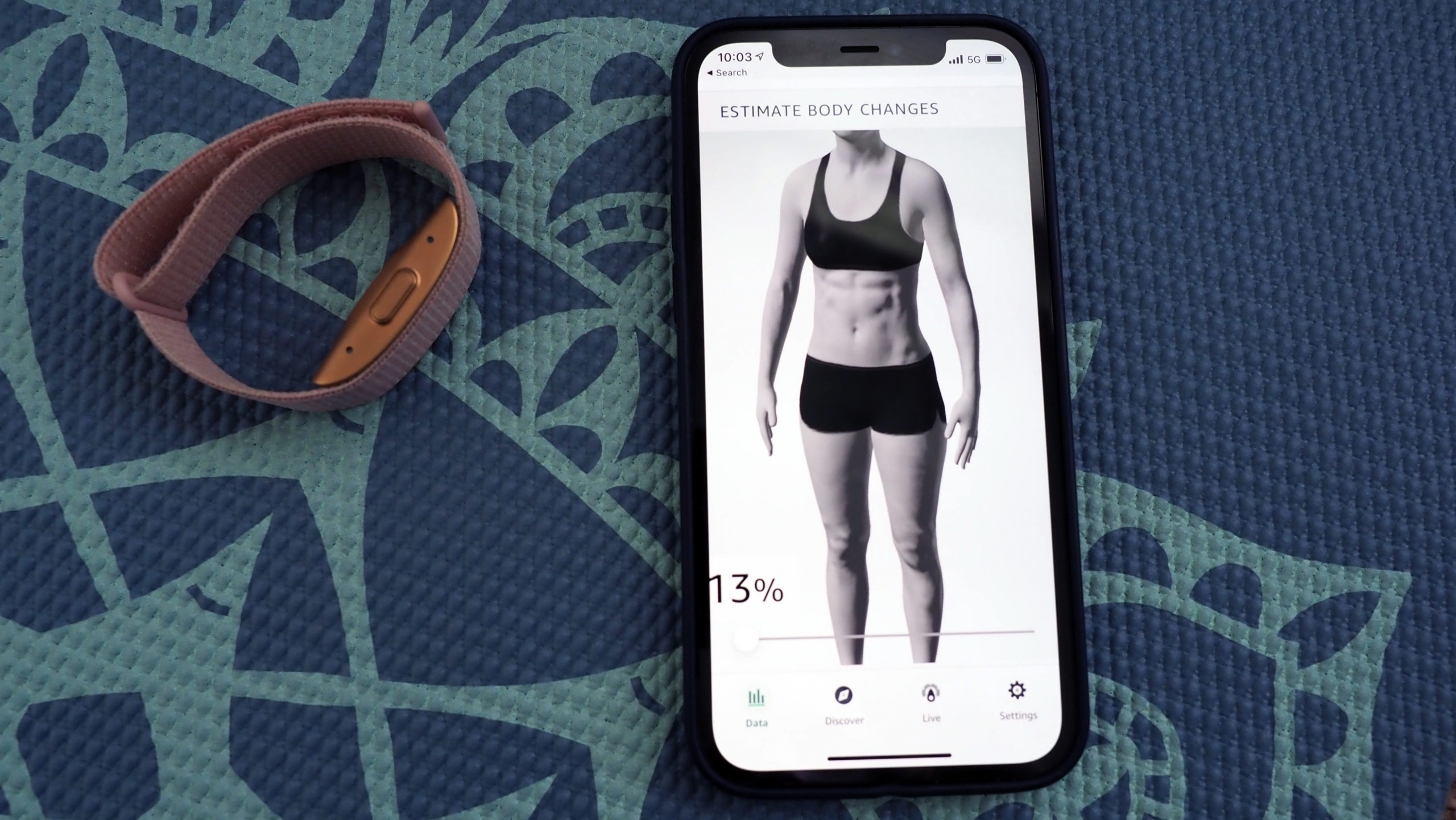
Like most human beings, I have been both smaller and larger than I am now, and I know for a fact that I would look nothing like the three-dimensional figure in the Halo Band app. But some people might look at that figure and obsess over it. It’s not helpful or informative, and might actively be harmful. And for what?
Plus, your images are sent to the cloud for analysis. That adds a slight ick factor. Amazon recommends that you not strip down fully to do the scan — a form-fitting pair of shorts and a bra will suffice — and that you only take one every two weeks, but still. It’s weird. You have the option to store your nearly naked scans in Amazon’s cloud if you want a record of have your body changes over time, but, uh…no thank you.
And that brings me to why the Halo Band is such a bizarre device. Amazon doesn’t want you to look at your wrist. There is no screen, and the band does not vibrate. And yet it expects you to look at this incredibly specific vocal analysis on your phone and reflect on how you sound, and it expects you to take private photos of yourself to reflect on how fat you are. It’s invasive. I’m not sure it’s helpful. And I didn’t find it motivating in the slightest. A fitness tracker should make you want to reach your goals, not make you feel like shit.
README
- A display-free fitness tracker is promising, but this ain’t it.
- The body fat scanner and tone analysis are uninspiring at best and might even make you feel bad about yourself.
- The Halo Band’s activity point system isn’t very motivating.
- You can definitely find a more capable fitness tracker for the price.
Editor’s Note: Stay tuned for local Australian pricing and availability.
